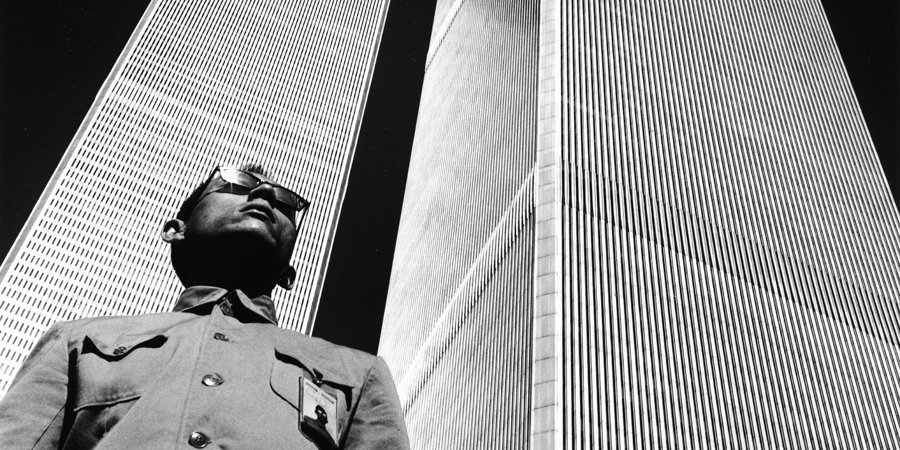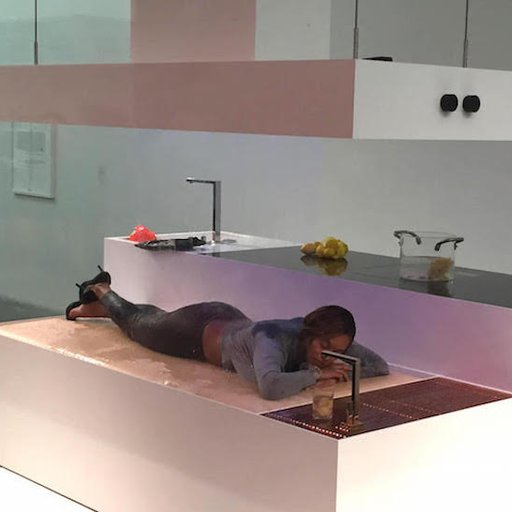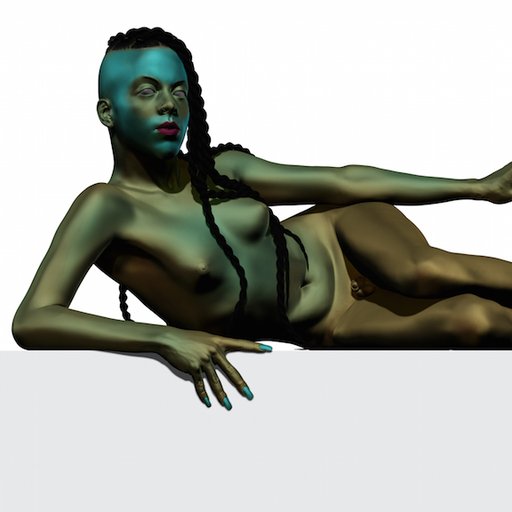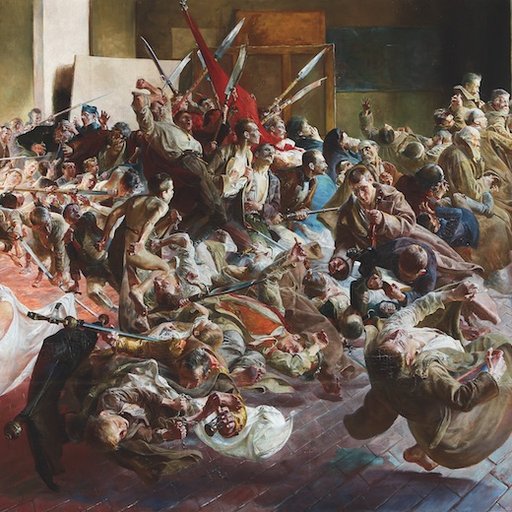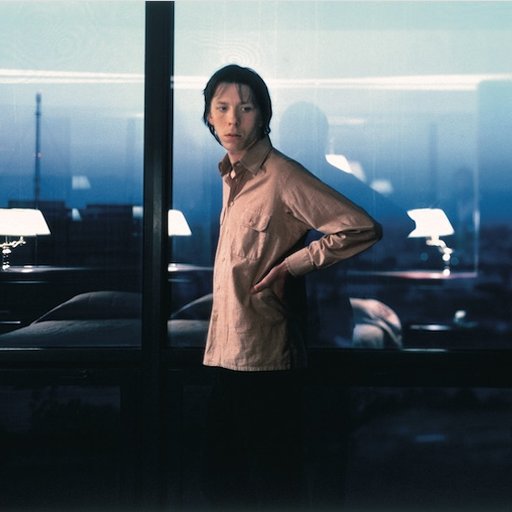Wearing a thrift-shop Mao suit, mirrored sunglasses, and an I.D. badge reading “SlutForArt,” the spritely Chinese-born photographer Tseng Kwong Chi appeared at American tourist sites and social events throughout the late 1970s and '80s in the guise of a visiting dignitary. There, he took the kind of pictures we now recognize as “selfies”: awkward but theatrical self-portraits that offer proof of presence, and maybe even of belonging.
This rich body of work, which Tseng created between his move to New York in 1978 and his death from AIDS-related complications in 1990, blended the permanence of photography with the more ephemeral performances of the East Village art scene. He sidled up to all manner of swells, from socialites at a Metropolitan Museum of Art gala to Moral Majority politicians at a conference, charming and befuddling them with his official-looking uniform; he also documented his own circle of artists and club kids (he’s probably best known, today, as the photographer of Keith Haring’s subway drawings.)
Tseng’s art lives on in the art of Ai Weiwei, Zhang Huan, and Nikki S. Lee, among others, and it’s now collected in the exhibition “Tseng Kwong Chi: Performing for the Camera,” co-organized by the Grey Art Gallery at New York University and the Chrysler Museum of Art in Norfolk, Virginia, which kicks off a national tour today at the Grey. Below is a look at the key moments from his all-too-brief career.
EAST MEETS WEST
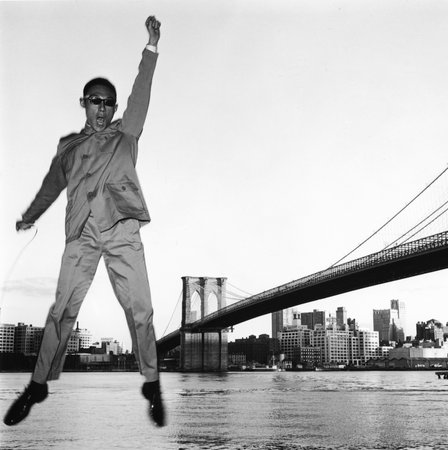
Inspired, in part, by the highly staged photo ops of Nixon’s 1972 trip to China, Tseng donned a Mao suit and transformed himself into an “ambiguous ambassador.” He had first discovered the power of the uniform at a family dinner at Windows on the World, where he had thrown one on at the last minute when he realized that he did not own the necessary suit and tie. His attire may also have been an act of filial rebellion, as Tseng’s parents had been active in an anti-Communist party in China.
In the most famous photographs from the series, Tseng poses in front of New York landmarks. Often his expression matches the stiff, diplomatic reserve conveyed by his outfit. But occasionally, it’s undercut by a tourist’s grin or, as in this shot of the Brooklyn Bridge, an ebullient leap.
COSTUMES AT THE MET
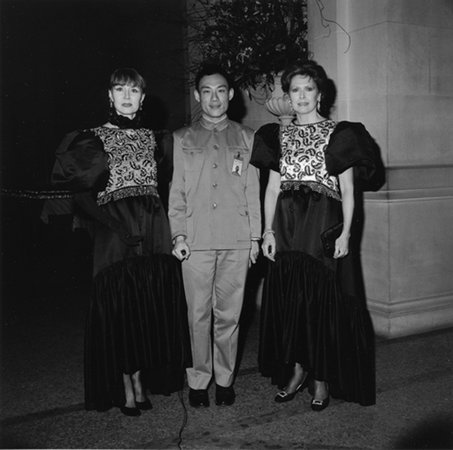 Gladys Solomon, Tseng Kwong Chi, and Jean Tailer, 1980. Gelatin silver prints, printed 1997. Courtesy Muna Tseng Dance Projects, Inc., New York.
Gladys Solomon, Tseng Kwong Chi, and Jean Tailer, 1980. Gelatin silver prints, printed 1997. Courtesy Muna Tseng Dance Projects, Inc., New York.
While making his “East Meets West” photographs, Tseng discovered that people treated him differently when he was wearing the Mao suit; they were respectful and deferential, mistaking him for an emissary. Thus attired, he was able to crash the exclusive gala for the exhibition “The Manchu Dragon: Costumes of the Ch’ing Dynasty, 1644-1912,” at the Met.
At the event, he had himself photographed himself alongside such society fixtures as Paloma Picasso and the Kissingers. It was a sly critique of the evening’s Orientalist theme, and of his fellow partygoers’ attempts at “Eastern” dress (as in this picture featuring two women in the same embroidered Adolfo dress).
This spring, the Met’s Costume Institute is once again having a China-inspired show, “China: Through the Looking Glass” (opening May 7). This time, Tseng is an invited guest, of sorts: his photographs will be included in the exhibition.
MORAL MAJORITY
 Tseng Kwong Chi and Daniel Fore, 1981. Gelatin silver print, printed 2014. Courtesy Muna Tseng Dance Projects, Inc., New York
Tseng Kwong Chi and Daniel Fore, 1981. Gelatin silver print, printed 2014. Courtesy Muna Tseng Dance Projects, Inc., New York
Even though he’s not in most of the pictures, Tseng’s skills as a performer are on full display in this series, published in 1981 in the Soho Weekly News. Swapping out his Mao uniform for a Reaganite seersucker suit, he approached members of Jerry Falwell’s “Moral Majority”—including Falwell himself— and convinced them to pose in front of a crumpled American flag. Mustering Colbert-like skills of satiric improvisation, he told his slightly suspicious subjects that the flag would appear to be blowing in the wind. Above, Tseng and his crisp Young Republican outfit make an appearance next to the ultra-conservative Reverend Daniel Fore, who had come under fire that year for his anti-Semitic comments.
POLAROID PHOTOMONTAGES AND GROUP PORTRAITS
 Art After Midnight, New York, 1985. Vintage gelatin silver print. Courtesy Muna Tseng Dance Projects, Inc., New York.
Art After Midnight, New York, 1985. Vintage gelatin silver print. Courtesy Muna Tseng Dance Projects, Inc., New York.
Along with cohorts like Keith Haring, Kenny Scharf, and Jean-Michel Basquiat, Tseng was active in the nocturnal downtown art and club scene. (He had his first solo exhibition at the Mudd Club, the Tribeca nightclub that included a gallery curated by Haring.) He took pictures at every outing and later turned them into grids of Polaroids, which he often annotated with markers and rubber stamps. (A memorable one in the current show documents a “Royal Wedding” theme night at the club the Underground, inspired by the nuptials of Charles and Diana).
Tseng also orchestrated wild, spontaneous-looking group portraits, like the one here, in which his Mao suit is just another form of eccentric clubwear, like the pirate shirt and devil’s-horns headdress worn by Joey Arias (on the top right).
THE EXPEDITIONARY SERIES
 Shrine of Democracy: Mount Rushmore, Black Hills, South Dakota, 1986. Vintage gelatin silver print. Chrysler Museum of Art, gift of the Joel B. Cooper family, in memory of Mary and Dudley Cooper.
Shrine of Democracy: Mount Rushmore, Black Hills, South Dakota, 1986. Vintage gelatin silver print. Chrysler Museum of Art, gift of the Joel B. Cooper family, in memory of Mary and Dudley Cooper.
A more contemplative offshoot of the “East Meets West” series, Tseng’s “Expeditionary Series” finds him posing in famous North American landscapes—often with his back turned to the camera, in the manner of one of Caspar David Friedrich’s “Rückenfigurs.” As the show’s curator, Amy Brandt, observes, these works also echo traditional Chinese ink paintings of reclusive, scholarly figures.
Also relevant is the fact that many of the works in the series date from the mid-1980s, a period during which the magnitude of the AIDS crisis was becoming apparent. The punkish, confrontational tone of “East Meets West” has been replaced by a quieter, more reflective mood. Tseng died in 1990, at age 39, within a month of his friend Haring.











